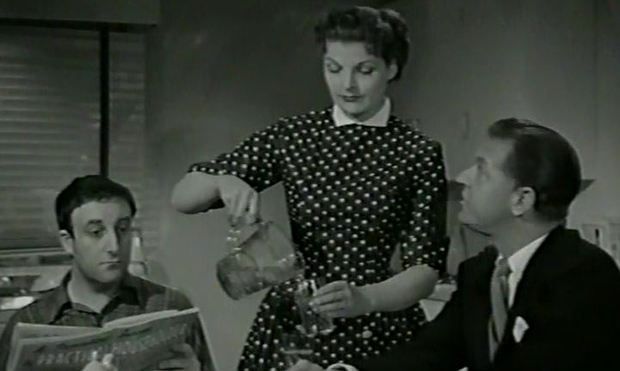[tube]NoAzpa1x7jU[/tube]
I couldn’t agree more with Michael Newton’s analysis — Blade Runner remains a dystopian masterpiece, thirty-three years on. Long may it reign and rain.
And, here’s another toast to the brilliant mind of Philip K Dick. The author’s work Do Androids Dream of Electric Sheep?, published in 1968, led to this noir science-fiction classic.
From the Guardian:
It’s entirely apt that a film dedicated to replication should exist in multiple versions; there is not one Blade Runner, but seven. Though opinions on which is best vary and every edition has its partisans, the definitive rendering of Ridley Scott’s 1982 dystopian film is most likely The Final Cut (2002), about to play out once more in cinemas across the UK. Aptly, too, repetition is written into the movie’s plot (there are spoilers coming), that sees Deckard (played by Harrison Ford) as an official bounty hunter (or “Blade Runner”) consigned to hunt down, one after the other, four Nexus-6 replicants (genetically-designed artificial human beings, intended as slaves for Earth’s off-world colonies). One by one, our equivocal hero seeks out the runaways: worldly-wise Zhora (Joanna Cassidy); stolid Leon (Brion James); the “pleasure-model” Pris (Daryl Hannah); and the group’s apparent leader, the ultimate Nietzschean blond beast, Roy Batty (the wonderful Rutger Hauer). Along the way, Deckard meets and falls in love with another replicant, Rachael (Sean Young), as beautiful and cold as a porcelain doll.
In Blade Runner, as in all science-fiction, the “future” is a style. Here that style is part film noir and part Gary Numan. The 40s influence is everywhere: in Rachael’s Joan-Crawford shoulder pads, the striped shadows cast by Venetian blinds, the atmosphere of defeat. It’s not just noir, Ridley Scott also taps into 70s cop shows and movies that themselves tapped into nostalgic style, with their yearning jazz and their sad apartments; Deckard even visits a strip joint as all TV detectives must. The movie remains one of the most visually stunning in cinema history. It plots a planet of perpetual night, a landscape of shadows, rain and reflected neon (shone on windows or the eye) in a world not built to a human scale; there, the skyscrapers dwarf us like the pyramids. High above the Philip Marlowe world, hover cars swoop and dirigible billboards float by. More dated now than its hard-boiled lustre is the movie’s equal and opposite involvement in modish early 80s dreams; the soundtrack by Vangelis was up-to-the-minute, while the replicants dress like extras in a Billy Idol video, a post-punk, synth-pop costume party. However, it is noir romanticism that wins out, gifting the film with its forlorn Californian loneliness.
It is a starkly empty film, preoccupied as it is with the thought that people themselves might be hollow. The plot depends on the notion that the replicants must be allowed to live no longer than four years, because as time passes they begin to develop raw emotions. Why emotion should be a capital offence is never sufficiently explained; but it is of a piece with the film’s investigation of a flight from feeling – what psychologist Ian D Suttie once named the “taboo on tenderness”. Intimacy here is frightful (everyone appears to live alone), especially that closeness that suggests that the replicants might be indistinguishable from us.
This anxiety may originally have had tacit political resonances. In the novel that the film is based on, Philip K Dick’s thoughtful Do Androids Dream of Electric Sheep? (1968), the dilemma of the foot soldier plays out, commanded to kill an adversary considered less human than ourselves, yet troubled by the possibility that the enemy are in fact no different. Shades of Vietnam darken the story, as well as memories of America’s slave-owning past. We are told that the replicants can do everything a human being can do, except feel empathy. Yet how much empathy do we feel for faraway victims or inconvenient others?
Ford’s Deckard may or may not be as gripped by uncertainty about his job as Dick’s original blade runner. In any case, his brusque “lack of affect” provides one of the long-standing puzzles of the film: is he, too, a replicant? Certainly Ford’s perpetual grumpiness (it sometimes seems his default acting position), his curdled cynicism, put up barriers to feeling that suggest it is as disturbing for him as it is for the hunted Leon or Roy. Though some still doubt, it seems clear that Deckard is indeed a replicant, his imaginings and memories downloaded from some database, his life as transitory as that of his victims. However, as we watch Blade Runner, Deckard doesn’t feel like a replicant; he is dour and unengaged, but lacks his victims’ detached innocence, their staccato puzzlement at their own untrained feelings. The antithesis of the scowling Ford, Hauer’s Roy is a sinister smiler, or someone whose face falls at the brush of an unassimilable emotion.
Read the entire article here.
Video: Blade Runner clip.


